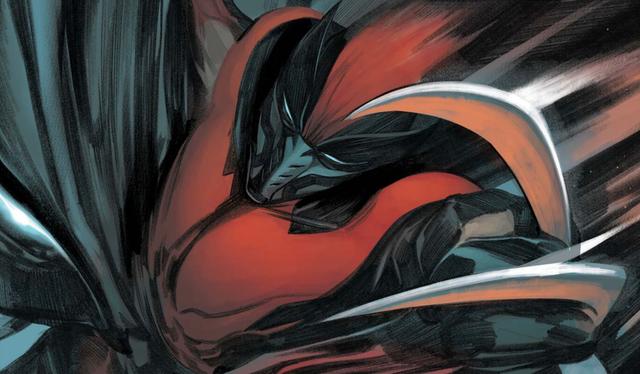If you click on a link and make a purchase we may receive a small commission. Read our editorial policy.
How successful are Substack comics newsletters?
What makes a hit when it comes to the leading newsletter platform?

When it comes to Substack’s comic book newsletters, what exactly constitutes 'success'?
That’s a complicated question, and one rooted very much in each individual’s perspective; one person’s smash success might be a failure for another, if the latter is more used to a higher readership on other projects, for example. Alternately, there’s the possibility that, for some, just the chance to do work without editorial restrictions but with the financial backing of the Substack Pro program is all the success needed, regardless of how many people sign up to receive each of the emails. In a very real sense, there’s no singular definition for anyone to live up to — but that’s unlikely not the answer that brought you to this this piece.
Let’s try and look at this from a more analytical standpoint, in that case. Substack, thankfully, publishes a chart of its comic publications — or, to be clear, it publishes two charts: one ranking them in terms of revenue generated, and one in terms of overall subscriber count. At time of writing, the charts look like this.
Top Substack Comics by subscribers 2022

- 1. Bad at Keeping Secrets (Carissa Potter)
- 2. I’m Fine I’m Fine Just Understand (ND Stevenson)
- 3. It’s Chip Zdarsky’s Newsletter, Okay? (Chip Zdarsky)
- 4. 3 Worlds/3 Moons (Jonathan Hickman, Mike del Mundo, Mike Huddleston)
- 5. Stupid Fresh Mess (Skottie Young)
- 6. The Empire of the Tiny Onion (James Tynion IV)
- 7. Our Best Jacket (Scott Snyder)
- 8. Xanaduum (Grant Morrison)
- 9. Exploding Giraffe (Brian K. Vaughan, Niko Henrichon)
- 10. Liana’s Newsletter (Liana Finck)
Top Substack Comics by revenue 2022
- 1. 3 Worlds/3 Moons (Jonathan Hickman, Mike del Mundo, Mike Huddleston)
- 2. The Empire of the Tiny Onion (James Tynion IV)
- 3. Our Best Jacket (Scott Snyder)
- 4. Exploding Giraffe (Brian K. Vaughan, Niko Henrichon)
- 5. I’m Fine I’m Fine Just Understand (ND Stevenson)
- 6. Xanaduum (Grant Morrison)
- 7. JenBartel.club (Jen Bartel)
- 8. Everlasting Productions (Tom King, Elsa Charretier)
- 9. It’s Chip Zdarsky’s Newsletter, Okay? (Chip Zdarsky)
- 10. KLC Press (Donny Cates, Ryan Stegman)
There might be a couple of titles in there unfamiliar to audiences who primarily read mainstream North American comics; Bad at Keeping Secrets, the top comic Substack in terms of subscribers, is Carissa Potter’s newsletter and interview series about human and emotional intimacy; Liana’s Newsletter is, as the name suggests, the newsletter of Liana Finck, a New Yorker cartoonist.
But how many subscribers do Substack comics have?
It’s difficult to know what to make of these rankings without any external context, but thankfully, we have some external context — kind of. Although Substack is (understandably) reluctant to release specific numbers about its subscriber base, some information has come out at different times. Last July, for example, Carissa Potter herself revealed that Bad at Keeping Secrets had close to 17,000 subscribers; earlier this month, Brian K. Vaughan shared that the Exploding Giraffe newsletter has “nearly 12,000” subscribers. It would suggest that, in terms of subscriber count, the top 10 newsletters are somewhere in between 10,000 and 20,000 subscribers. (That doesn’t necessarily translate into that many readers, though; Substack itself suggests that an open rate of 50-60% is good, meaning that it’s possible that less than half of the subscriber base is actually reading each individual email.)
How much money does Substack comics bring in?

In terms of revenue generated, we similarly have some loose context. In May 2022, 3 Worlds/3 Moons celebrated almost reaching the 10,000 subscriber mark, writing, “As of today, we have just under 10,000 overall subscribers, with 2300 of you supporting us financially as paid subscribers. About a third of those do so at the founding level.” We know for a fact that 3W/3M broke the 10,000 subscriber barrier — again, it’s ranked higher than Exploding Giraffe, which has close to 12,000 — but that number remains a useful benchmark for some quick, back of the napkin math.
Let’s also assume that the “about a third” supporting the project is roughly 750 people, which is just below a third of 2,300, and while we’re at it, let’s assume that the remainder of those supporting the newsletter financially are doing so at the annual level of $80 per year, which is lower than the $96 annually it would cost going month-to-month. (Pricing from here.) All of that seems reasonable, right?
If all of those assumptions were true, then 3 Worlds/3 Moons would generate somewhere in the region of $311,500 annually. The math is relatively straightforward: it’s $187,500 from founders (750 at $250 annually) + $124,000 from other paid subscribers (1550 at $80 annually). Again, this is likely lowballing the reality of the situation; if paid subscribers are going month by month, that figure would go up. If there are more than 750 founders, that number goes up. And, as previously noted, we’re lowballing the numbers, because we know (a) that 3 Worlds/3 Moons has significantly more than 10,000 subscribers, and (b) that the paid subscribers not on the founders level might be paying monthly, which would cost more.
Admittedly, the math gets a little more complicated as a result of 3W/3M being part of the Substack Pro program. As part of that program, 3W/3M was given a grant of an undisclosed amount upfront, before launch. (None of the involved parties would talk to the amount, but sources close to the matter have speculated that it was likely between $300,000-$500,000.) As part of the Substack Pro deal, however, Substack takes 85% of all income generated by the newsletter in its first year, switching to taking 10% of all income in subsequent years.
Again, there’s no small amount of speculation and guesswork at play in the math here, but if we’re going by the numbers, a good baseline for what defines success in terms of comic book Substacks is, apparently, $300,000 in terms of annual revenue, or 17,000 subscribers or above. Set your targets, newcomers.
3 Worlds/3 Moons’ Jonathan Hickman talked to Popverse about creating a universe in 2022.
Follow Popverse for upcoming event coverage and news
Find out how we conduct our review by reading our review policy
Let Popverse be your tour guide through the wilderness of pop culture
Sign in and let us help you find your new favorite thing.
















Comments
Want to join the discussion? Please activate your account first.
Visit Reedpop ID if you need to resend the confirmation email.